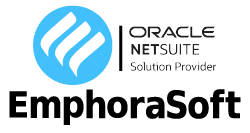
Cybersecurity in Cloud ERP: Protecting Your Business in a Digital World
In today’s rapidly evolving digital landscape, businesses of all sizes are increasingly turning to Cloud Enterprise Resource Planning (ERP) systems to streamline operations, enhance productivity, and drive growth. These sophisticated platforms integrate crucial business processes—from finance and human resources to supply chain management and customer relationships—into a unified, cloud-based ecosystem. However, as organizations migrate their most sensitive data and critical operations to the cloud, they face an expanding array of cybersecurity challenges that demand immediate and ongoing attention.
The Growing Importance of Cybersecurity in Cloud ERP
The digital transformation wave has catapulted Cloud ERP solutions to the forefront of business technology adoption. According to recent industry reports, the global Cloud ERP market is expected to reach $101.1 billion by 2025, representing a significant shift from traditional on-premise systems. This migration offers numerous advantages: reduced IT infrastructure costs, enhanced scalability, improved accessibility, and streamlined updates. Yet, it also introduces complex security considerations that organizations cannot afford to overlook.
When businesses transition to Cloud ERP, they essentially entrust their operational backbone and sensitive data to third-party providers. Financial records, customer information, intellectual property, strategic plans, and employee data—all reside within these systems. This concentration of valuable assets creates an attractive target for cybercriminals, making robust security measures not just beneficial but essential.
The stakes are particularly high given the potential consequences of a security breach. Beyond immediate financial losses, organizations face regulatory penalties, litigation, reputation damage, operational disruption, and erosion of customer trust. For many businesses, especially small and medium enterprises with limited resources to weather such storms, a significant security incident can threaten their very existence.
Understanding the Threat Landscape
To effectively protect Cloud ERP systems, organizations must first understand the diverse and evolving nature of cyber threats they face. These threats range from sophisticated, targeted attacks by advanced persistent threat (APT) groups to opportunistic exploits of common vulnerabilities.
External Threats
Ransomware Attacks: Perhaps the most feared threat in today’s landscape, ransomware attacks encrypt critical ERP data, rendering it inaccessible until a ransom is paid. Modern ransomware operators often employ a double-extortion strategy—threatening to publish stolen data if demands aren’t met, creating additional pressure beyond the operational disruption.
Phishing and Social Engineering: Human vulnerability remains a primary attack vector. Sophisticated phishing campaigns target employees with access to ERP systems, tricking them into revealing credentials or installing malware. These attacks become increasingly convincing as attackers gather detailed information about organizational structures and individual roles from social media and other public sources.
API Vulnerabilities: Cloud ERP systems rely heavily on APIs (Application Programming Interfaces) to communicate between different components and integrate with third-party applications. Insecure APIs can provide attackers with pathways into otherwise well-protected systems.
Supply Chain Compromises: The SolarWinds incident of 2020 highlighted how attackers can target software supply chains to gain access to multiple organizations simultaneously. For Cloud ERP users, vulnerabilities in the provider’s infrastructure or third-party integrations can create unexpected security gaps.
Zero-Day Exploits: Previously unknown vulnerabilities in Cloud ERP platforms represent a persistent threat, as attackers may discover and exploit these weaknesses before vendors can develop and deploy patches.
Internal Threats
Insider Threats: Employees, contractors, or business partners with legitimate access to ERP systems may deliberately or accidentally compromise security. This could range from data theft by disgruntled staff to inadvertent information exposure through poor security practices.
Configuration Errors: Cloud environments introduce complexity in configuration management. Misconfigurations—such as overly permissive access controls, unsecured storage buckets, or disabled security features—can create vulnerabilities even in otherwise secure systems.
Inadequate Access Controls: Without proper role-based access control (RBAC) and least privilege principles, users may have unnecessary access to sensitive data and functions within the ERP system, increasing the potential impact of compromised accounts.
Shadow IT: When approved systems don’t meet user needs, employees may implement unauthorized solutions that bypass security controls, potentially creating data leakage or compliance issues.
Industry-Specific Threats
Different sectors face unique cybersecurity challenges related to their Cloud ERP implementations:
Manufacturing: Increasing integration between ERP systems and operational technology (OT) creates potential for attacks that could disrupt production lines or compromise product quality.
Healthcare: Patient data protected under HIPAA and other regulations requires stringent security measures, while interconnections between ERP and clinical systems present complex protection challenges.
Retail: Payment card information flowing through ERP systems makes retail organizations prime targets for financially motivated attackers.
Financial Services: The high value of financial data and transactions, combined with extensive regulatory requirements, creates a particularly challenging security environment.
Cloud ERP Security Best Practices
Protecting Cloud ERP systems requires a comprehensive, multi-layered approach that addresses technological, organizational, and human factors.
Secure Implementation Strategies
Security-First Planning: Security considerations should drive Cloud ERP implementation from the earliest stages, not be addressed as an afterthought. This includes thorough vendor security assessment, clear security requirements, and architecture design that incorporates defense-in-depth principles.
Vendor Due Diligence: Not all Cloud ERP providers offer equivalent security capabilities. Organizations should evaluate potential vendors based on their security certifications (SOC 2, ISO 27001, etc.), transparency regarding security practices, incident response capabilities, and track record in addressing vulnerabilities.
Secure Configuration Baseline: Establish and document secure configuration baselines for all ERP components, aligned with industry standards and vendor recommendations. This should include disabling unnecessary features, closing default accounts, and implementing secure communication protocols.
Comprehensive Testing: Before go-live, conduct thorough security testing, including vulnerability assessments, penetration testing, and security code reviews for any custom developments or integrations.
Phased Rollout: Consider implementing the most sensitive modules or data sets last, after gaining experience and confirming security controls with less critical components.
Access Control and Identity Management
Identity and Access Management (IAM): Implement robust IAM solutions that support strong authentication, centralized user management, and fine-grained authorization controls.
Multi-Factor Authentication (MFA): Require MFA for all ERP access, especially for administrative accounts and remote connections. This significantly reduces the risk from credential theft and brute force attacks.
Principle of Least Privilege: Users should have access only to the specific data and functions necessary for their roles. Regularly review and adjust permissions as responsibilities change.
Privileged Access Management: Implement additional controls for administrative and other high-privilege accounts, including just-in-time access, session recording, and enhanced monitoring.
User Lifecycle Management: Establish efficient processes for onboarding, role changes, and offboarding to ensure access privileges accurately reflect current responsibilities and relationships.
Data Protection Strategies
Data Classification: Identify and categorize data within the ERP system based on sensitivity and regulatory requirements, enabling appropriate protection measures for each category.
Encryption: Implement encryption for data at rest and in transit. Ensure that encryption key management processes are secure and resilient.
Data Loss Prevention (DLP): Deploy DLP tools to monitor and control the movement of sensitive data within and outside the ERP environment.
Data Minimization: Limit collection and retention of sensitive data to what is necessary for business operations, reducing potential exposure in case of a breach.
Secure Backup and Recovery: Implement comprehensive backup strategies with regular testing of recovery procedures. Consider offline backup copies as protection against ransomware.
Continuous Monitoring and Threat Detection
Security Information and Event Management (SIEM): Deploy SIEM solutions to collect and analyze security events across the ERP environment, enabling rapid detection of potential threats.
User and Entity Behavior Analytics (UEBA): Implement UEBA capabilities to identify unusual patterns that might indicate compromised accounts or insider threats.
Vulnerability Management: Establish processes for continuously identifying, assessing, and remediating vulnerabilities in the ERP environment, including regular scanning and prompt application of security patches.
Threat Intelligence Integration: Leverage threat intelligence feeds to stay informed about emerging threats and attack techniques relevant to your Cloud ERP platform.
Security Operations Center (SOC): For larger organizations, consider establishing a dedicated SOC or engaging managed security service providers to provide 24/7 monitoring and response capabilities.
Incident Response and Business Continuity
Incident Response Plan: Develop a comprehensive incident response plan specifically addressing Cloud ERP security incidents, with clear roles, communication protocols, and procedures.
Regular Drills: Conduct tabletop exercises and technical drills to ensure teams are prepared to execute the incident response plan effectively.
Business Continuity Planning: Develop strategies for maintaining critical business operations during ERP system disruptions, including alternative processing methods and recovery priorities.
Forensic Readiness: Ensure that logging and monitoring capabilities support effective forensic investigation following security incidents.
Cyber Insurance: Consider appropriate cyber insurance coverage to mitigate financial impacts of significant security incidents.
Emerging Technologies and Approaches
The cybersecurity landscape continues to evolve, with new technologies offering enhanced protection capabilities for Cloud ERP systems.
Artificial Intelligence and Machine Learning
AI and ML technologies are increasingly integrated into security solutions, offering several advantages:
Advanced Threat Detection: Machine learning algorithms can identify subtle patterns indicating potential attacks, detecting sophisticated threats that might evade traditional signature-based approaches.
Anomaly Detection: AI-powered tools can establish baselines of normal user and system behavior, flagging deviations that might represent security incidents.
Automated Response: Security automation can accelerate response to common threat patterns, containing potential damage before human analysts intervene.
Predictive Security: Advanced analytics can help organizations anticipate emerging vulnerabilities and proactively strengthen defenses.
However, organizations should be aware that attackers also leverage AI to enhance their capabilities, creating an ongoing technological arms race.
Zero Trust Architecture
The Zero Trust model—built on the principle of “never trust, always verify”—is increasingly relevant for Cloud ERP security:
Continuous Verification: Zero Trust approaches require continuous validation of users, devices, and application behavior, rather than assuming trustworthiness based on network location or initial authentication.
Micro-Segmentation: Breaking the ERP environment into secure zones with independent access controls limits lateral movement by attackers who breach perimeter defenses.
Device Trust: Ensuring that only managed, compliant devices can access ERP resources reduces risks from compromised endpoints.
Contextual Access Decisions: Authentication and authorization decisions incorporate multiple factors, including user identity, device health, location, and behavior patterns.
Blockchain for Enhanced Security
While still emerging in the ERP context, blockchain technology offers interesting security possibilities:
Immutable Audit Trails: Blockchain-based logging provides tamper-resistant records of system activities and transactions.
Supply Chain Verification: For manufacturing and distribution organizations, blockchain can enhance trust in supply chain data flowing through ERP systems.
Smart Contracts: Automated execution of predefined rules can enhance security in partner integrations and cross-organizational processes.
Regulatory Compliance and Standards
Cloud ERP security strategies must address an increasingly complex regulatory landscape that varies by industry and geography.
Key Regulations Affecting Cloud ERP
General Data Protection Regulation (GDPR): For organizations handling EU citizens’ data, GDPR imposes strict requirements regarding data protection, breach notification, and privacy rights.
California Consumer Privacy Act (CCPA) and Similar State Laws: A growing patchwork of state privacy laws in the US creates compliance challenges for multi-state operations.
Health Insurance Portability and Accountability Act (HIPAA): Healthcare organizations must ensure protected health information in ERP systems meets HIPAA’s security and privacy requirements.
Payment Card Industry Data Security Standard (PCI DSS): Organizations processing payment card transactions through their ERP systems must comply with PCI DSS requirements.
Sarbanes-Oxley Act (SOX): Publicly traded companies must ensure their ERP systems support accurate financial reporting and include appropriate controls.
Industry-Specific Regulations: Various sectors face additional requirements, such as NERC CIP for utilities or DFARS for defense contractors.
Compliance Frameworks and Standards
Several frameworks and standards can guide Cloud ERP security implementation:
NIST Cybersecurity Framework: Provides a comprehensive approach to managing cybersecurity risk across five functions: Identify, Protect, Detect, Respond, and Recover.
ISO/IEC 27001: Offers an internationally recognized approach to information security management systems.
Cloud Security Alliance (CSA) Security, Trust & Assurance Registry (STAR): Provides security assurance in cloud computing through self-assessment or third-party certification.
Center for Internet Security (CIS) Controls: Presents a prioritized set of actions to protect organizations and data from known cyber attack vectors.
Compliance Management Strategies
Effective compliance management for Cloud ERP security includes:
Compliance Mapping: Align security controls with specific regulatory requirements to identify coverage and gaps.
Automated Compliance Monitoring: Implement tools that continuously verify compliance status rather than relying solely on periodic assessments.
Evidence Collection: Streamline the collection and organization of evidence needed for audits and certifications.
Vendor Compliance Management: Ensure Cloud ERP providers meet compliance requirements relevant to your industry through contractual obligations and regular verification.
Special Considerations for Small and Medium Enterprises
While large enterprises often have dedicated security teams and substantial resources, small and medium enterprises (SMEs) face unique challenges in securing their Cloud ERP systems.
Resource Constraints
SMEs typically operate with limited IT and security staff, requiring approaches that maximize efficiency:
Managed Security Services: Consider outsourcing certain security functions to specialized providers who can deliver economies of scale and specialized expertise.
Security-as-a-Service Solutions: Cloud-based security tools can provide enterprise-grade capabilities with lower implementation and maintenance overhead.
Prioritization Frameworks: Focus limited resources on protecting the most critical assets and addressing the highest-probability threats first.
Leveraging Provider Capabilities
For SMEs, selecting the right Cloud ERP provider becomes even more critical:
Security Feature Evaluation: Thoroughly assess the security features included in prospective ERP solutions, as building custom security layers may be prohibitively expensive.
Shared Responsibility Understanding: Clearly define security responsibilities between your organization and the provider, ensuring critical protections don’t fall through gaps.
Provider Security Expertise: Consider the provider’s security team as an extension of your own, taking advantage of their specialized knowledge.
Right-Sized Approaches
Effective SME security strategies are appropriately scaled:
Simplified Policies and Procedures: Develop clear, concise security policies that address key risks without creating overwhelming documentation.
Essential Security Controls: Implement fundamental security measures first—strong authentication, encryption, access controls, and basic monitoring—before pursuing more advanced capabilities.
Security-Conscious Culture: Invest in developing security awareness among all employees, creating a human firewall to complement technical controls.
Industry-Specific Considerations
Different sectors face unique challenges and requirements when securing Cloud ERP systems.
Manufacturing
Manufacturing organizations face distinct security considerations:
OT/IT Convergence: As ERP systems increasingly integrate with operational technology, securing these connections becomes critical to prevent production disruptions.
Intellectual Property Protection: Manufacturing ERP systems often contain valuable IP, from product designs to proprietary manufacturing processes, requiring strong data protection.
Supply Chain Security: With ERP systems connecting to supplier and customer systems, securing these interfaces is essential to prevent supply chain attacks.
Quality Control Integration: Security breaches affecting quality management modules could impact product safety and reliability.
Healthcare
Healthcare organizations must balance accessibility with stringent protection requirements:
Protected Health Information (PHI): ERP systems may contain PHI subject to HIPAA and other regulations, requiring appropriate security controls and breach response capabilities.
Clinical System Integration: Interfaces between ERP and clinical systems create potential security vulnerabilities that could impact patient care.
Medical Device Management: ERP components tracking medical devices must maintain data integrity to support patient safety and regulatory compliance.
Research Data Protection: Academic medical centers must protect valuable research data that may be managed through ERP systems.
Retail
Retail organizations face security challenges related to payment processing and customer data:
Payment Card Security: ERP components handling payment information must comply with PCI DSS requirements.
Customer Data Protection: Loyalty programs and customer relationship management functions contain sensitive personal information requiring appropriate safeguards.
Omnichannel Security: ERP systems supporting omnichannel retail must secure connections between online and physical store operations.
Seasonal Scalability: Security controls must accommodate significant seasonal variations in transaction volumes and temporary staff access.
Financial Services
Financial institutions face particularly stringent security requirements:
Regulatory Compliance: Multiple overlapping regulations govern financial data security, creating complex compliance obligations.
Transaction Integrity: Ensuring the accuracy and non-repudiation of financial transactions is paramount.
Fraud Prevention: ERP security controls must support detection and prevention of both internal and external fraud attempts.
Third-Party Risk Management: Financial services organizations typically connect their ERP systems with numerous partners and service providers, creating extensive third-party risk.
Building a Cyber-Resilient ERP Environment
Beyond implementing technical controls, organizations should develop an overarching approach to cyber resilience—the ability to prepare for, respond to, and recover from cyber incidents while maintaining critical functions.
Security Governance
Effective governance establishes the foundation for sustained security efforts:
Executive Support: Ensure senior leadership understands and supports ERP security initiatives through regular briefings and clear risk articulation.
Security Committees: Establish cross-functional committees to guide security decisions, ensuring business needs are balanced with security requirements.
Clear Roles and Responsibilities: Define security responsibilities across the organization, from the board and C-suite to individual users.
Policy Framework: Develop a comprehensive but usable security policy framework addressing Cloud ERP protection requirements.
Metrics and Reporting: Establish meaningful security metrics that provide visibility into the effectiveness of controls and enable data-driven improvement.
Security Culture Development
Technical controls alone cannot ensure ERP security without a corresponding security-conscious culture:
Awareness Programs: Implement targeted security awareness initiatives focusing on specific ERP-related risks and protective behaviors.
Role-Based Training: Provide specialized security training for different user groups based on their ERP access and responsibilities.
Positive Reinforcement: Recognize and reward security-conscious behaviors rather than focusing exclusively on policy violations.
Clear Expectations: Ensure all users understand their security responsibilities and the potential consequences of their actions.
Leadership Modeling: Encourage leaders to visibly demonstrate commitment to security practices in their own use of ERP systems.
Continuous Improvement
Security is not a destination but a journey requiring ongoing evolution:
Security Assessments: Conduct regular assessments of ERP security posture, including external penetration testing and internal control reviews.
Lessons Learned: After security incidents or near-misses, conduct thorough analysis to identify improvement opportunities.
Threat Landscape Monitoring: Maintain awareness of evolving threats and attack techniques targeting Cloud ERP systems.
Benchmarking: Compare security practices against industry peers and recognized standards to identify enhancement opportunities.
Technology Evaluation: Regularly assess new security technologies for potential to address emerging risks or improve efficiency.
The Future of Cloud ERP Security
As Cloud ERP systems continue to evolve, so too will the security challenges and solutions surrounding them.
Integration of Emerging Technologies
Several technologies are poised to transform Cloud ERP security:
Quantum Computing: While presenting potential threats to current cryptographic protections, quantum computing may eventually enable more sophisticated security analytics and faster encryption.
Extended Reality (XR): As ERP interfaces incorporate virtual and augmented reality elements, new security considerations will emerge regarding authentication and data visualization.
Edge Computing: Distributed ERP architectures leveraging edge computing will require security approaches that protect data processed outside traditional cloud environments.
5G Networks: Increased connectivity speeds and capacity will enable more real-time ERP operations, requiring corresponding advances in security monitoring and response.
Evolution of Threat Landscape
Future threat developments will likely include:
AI-Powered Attacks: Adversaries will increasingly leverage artificial intelligence to automate attacks, evade detection, and identify vulnerabilities.
Supply Chain Targeting: As direct attacks become more difficult, attackers will continue to focus on supply chain compromises and trusted partner relationships.
Expanded Attack Surface: IoT integration, mobile access, and other expansions of ERP functionality will create new potential entry points for attackers.
Deepfake Social Engineering: Advanced audio and video manipulation may enable more convincing social engineering attacks targeting ERP access.
Regulatory Development
The regulatory environment will continue to evolve:
Increased Harmonization: We may see greater efforts to harmonize cybersecurity regulations across jurisdictions, potentially simplifying compliance.
Security by Design Requirements: Regulations may increasingly mandate security-by-design approaches in software development and deployment.
Breach Reporting Expansion: More jurisdictions will likely implement mandatory breach reporting with increasingly stringent timelines.
AI Regulation: As AI becomes more integrated into ERP security, corresponding regulations regarding AI use and governance will emerge.
Conclusion: A Strategic Imperative
As organizations increasingly rely on Cloud ERP systems to power their operations, the security of these platforms becomes not just an IT concern but a strategic business imperative. The potential consequences of security failures—from operational disruption and financial losses to regulatory penalties and reputational damage—make ERP security a board-level issue.
Yet the challenge is not insurmountable. By implementing comprehensive security strategies that address technology, people, and processes, organizations can significantly reduce their risk exposure. The key lies in approaching security as an ongoing journey rather than a one-time project—continuously adapting to evolving threats, technologies, and business requirements.
For leaders navigating this complex landscape, several principles can guide effective decision-making:
- Risk-Based Prioritization: Focus resources on protecting the most critical assets against the most likely threats.
- Defense in Depth: Implement multiple overlapping protections rather than relying on single security controls.
- User Experience Balance: Design security measures that protect critical assets while maintaining usability for legitimate users.
- Integration with Business Processes: Embed security considerations into business processes rather than treating them as separate activities.
- Continuous Validation: Regularly test security controls through assessments, exercises, and real-world incident response.
By embracing these principles and establishing robust security practices, organizations can confidently leverage the transformative power of Cloud ERP while effectively managing the associated risks. In today’s digital business environment, this balanced approach isn’t just prudent—it’s essential for sustainable success and competitive advantage.
As we look to the future, the organizations that will thrive are those that view cybersecurity not as a cost center or compliance exercise, but as a strategic enabler that builds trust, protects innovation, and ensures operational resilience in an increasingly interconnected world. The journey may be challenging, but with appropriate investment, expertise, and commitment, the destination—a secure and resilient Cloud ERP environment—is well within reach.
FAQ's
Cloud ERP integrates core business functions—such as finance, HR, and supply chain—into a single cloud-based platform. This adoption offers benefits like reduced IT costs, scalability, and continuous updates, although it also introduces new cybersecurity challenges.
Because Cloud ERP systems house sensitive data—from financial records to customer information—a breach can lead to financial loss, regulatory penalties, operational disruption, and severe reputation damage. Cybersecurity is therefore essential to protect these high-value assets.
Threats include ransomware attacks, phishing and social engineering, API vulnerabilities, supply chain compromises, and zero-day exploits. These threats exploit the system’s connectivity and complexity, making robust defenses necessary.
Internal risks such as disgruntled employees, accidental misconfigurations, and inadequate access controls can compromise data. Poorly configured systems may allow excessive access or create security gaps that attackers can exploit.
Key practices include security-first planning, vendor due diligence, establishing secure configuration baselines, comprehensive testing (like vulnerability assessments and penetration testing), and implementing phased rollouts for sensitive modules.
Implementing robust Identity and Access Management (IAM) is critical. Measures like multi-factor authentication (MFA), the principle of least privilege, and privileged access management ensure that users access only the data and functions necessary for their roles.
Organizations should classify data, implement encryption for data at rest and in transit, deploy Data Loss Prevention (DLP) tools, practice data minimization, and maintain secure backup and recovery protocols to safeguard sensitive information.
Using tools such as Security Information and Event Management (SIEM) and User and Entity Behavior Analytics (UEBA), along with regular vulnerability management and threat intelligence feeds, helps in promptly identifying and mitigating emerging threats.
Cloud ERP systems must comply with various regulations (such as GDPR, HIPAA, PCI DSS, and SOX) to protect sensitive data. Aligning security controls with these standards is crucial to avoid legal penalties and maintain customer trust.
Emerging technologies help enhance threat detection and automated response. AI and machine learning can identify subtle anomalies and patterns, while Zero Trust architecture enforces continuous verification and micro-segmentation to minimize risk exposure.







